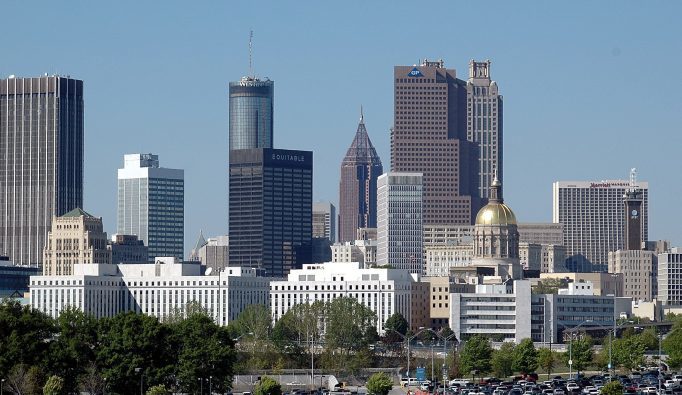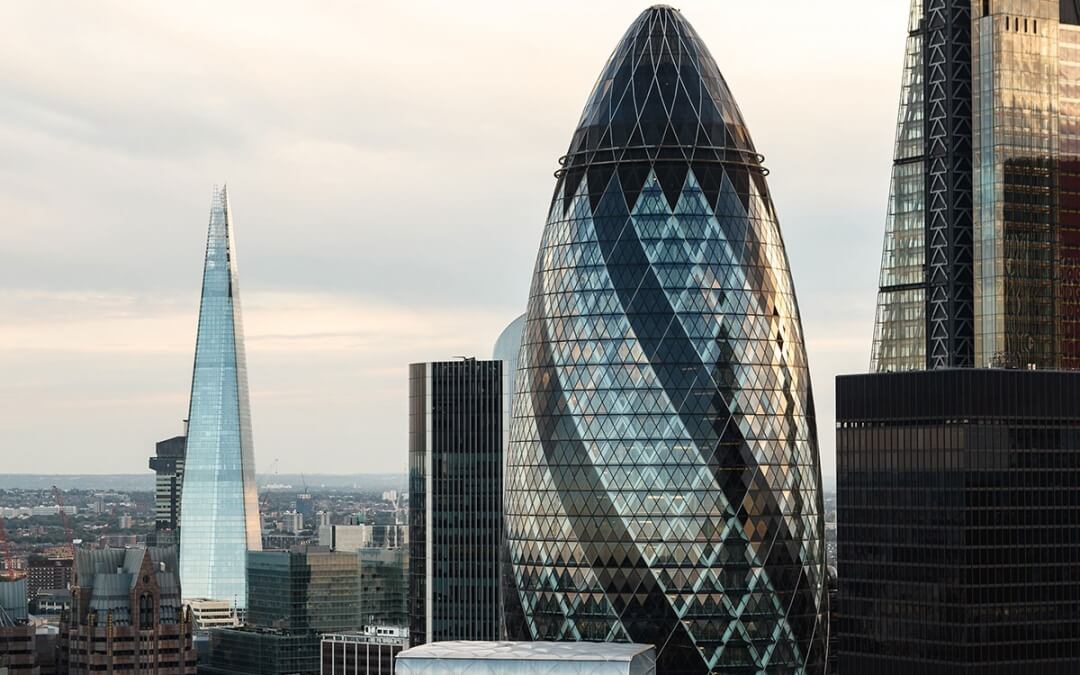
by LDeX Group | Jan 23, 2018 | Blog, Press
Local authorities are expected to approve a new development codenamed Morning Hornet in the coming hours.
The world’s largest social media company could be about to announce one of the world’s largest data centre investments topping up to $20bn in capital expenditures on a single site over a number of years.
According to The Atlanta Business Chronicle, Facebook is expected to announce a 400-acre campus in the Greater Metro Atlanta, east of Covington.
The site is to be located at Stanton Springs, mainly in the Walton County, a new development backed by local authorities to boost the settlement of large corporate campuses, data centres, advanced manufacturing or bio-pharmaceutical facilities, or high-technology distribution centres in the region.
The Facebook project could be codenamed under “Morning Hornet”. The local Joint Development Authority for the Walton County and three other counties that also own part of the land in which Stanton Springs sits, are expected to approve the purchase and sale agreement, pre-development agreement and site access agreement of the secret development this Tuesday.
Facebook was not immediately available for comment.
According to the company’s job page, Facebook is currently looking for a construction project engineer to be “located in the South-eastern region of the United States”.
“The exact location is still to be determined,” it reads in the ad that includes Atlanta, GA, as a general location.
Additionally, Facebook has also posted job vacancies for two construction project managers to be based at the same “still to be determined” location.
If Facebook announces a hyperscale data centre campus in Atlanta, the company will be joining one of the fastest growing hosting hotspots.

by LDeX Group | Jan 12, 2018 | Blog, Press
26% of revenues come from the world’s top five metro areas alone.
Data centres are being built all over the world, however, 59% of global revenues from wholesale and retail colocation come from just 20 metro areas in North America, Europe and APAC.
According to Synergy Research Group, of those 59%, 26% come from the world’s top five metro areas alone including Washington, New York, Tokyo, London, and Shanghai. The think tank ranked the cities by revenue generated in Q3 2017.
The next 15 largest metro markets account for another third of the worldwide market. Those top 20 metros include ten in North America, four in the EMEA region and six in the APAC region.
Across the 20 largest metros, retail colocation accounted for 72% of Q3 revenues and wholesale 28%.

In Q3 Equinix was the market leader by revenue in eight of the top 20 metros and Digital Realty would be the leader in five more if a full quarter of the acquired DuPont Fabros operations were included in its numbers.
Other colocation operators that featured heavily in the top 20 metros include 21Vianet, @Tokyo, China Telecom, CoreSite, CyrusOne, Global Switch, Interxion, KDDI, NTT, SingTel and QTS.
Over the last four quarters, colocation revenue growth in the top five metros outstripped growth in the rest of the world by two percentage points, which according to Synergy, translates into the worldwide market being slowly concentrated more in those metro areas.
The Top 20 metros with annualised growth rates of 15% or more (measured in local currencies) were Shanghai, Beijing, Hong Kong and Washington/Northern Virginia.
All four saw strong growth in both the retail and wholesale segments of the market, though growth in wholesale tended to be higher. Synergy also highlighted Chicago, which has seen very strong growth in wholesale revenues, though in this metro retail colocation growth was relatively weak.
John Dinsdale, a Chief Analyst and Research Director at Synergy Research Group, said: “While we are seeing reasonably robust growth across all major metros and market segments, one number that jumps out is the wholesale growth rate in the Washington/Northern Virginia metro area.
“It is by far the largest wholesale market in the world and for it to be growing at 20% is particularly noteworthy. The broader picture is that data centre outsourcing and cloud services continue to drive the colocation market, and the geographic distribution of the world’s corporations is focusing the colocation market on a small number of major metro areas.”

by LDeX Group | Nov 9, 2017 | Blog, Press
The world is heading for big. Not just big data, but big transformation which will introduce new ways of designing and running data centres. In Dublin, the industry heard from LinkedIn’s Zaid Ali Kahn on how data centres will transform. João Marques Lima reports.
The Internet of Things, which is today connecting more than 20 billion devices and is expected to connect as many as 70 billion by 2020, according to the highest estimates, will drive a challenging need to build IT infrastructure capable of handling the 24×7 ongoing demand for applications such as video, social media, enterprise business, financial systems, and so on.
However, the data centre industry can sometimes be reluctant to change, especially with the introduction of technologies which, if faulty, could cut off revenue streams.
Nevertheless, although reluctance might exist, the reality is that today, most outages are caused by humans, not technology.
The big transformation heading towards data centres is not only targeting the death of ‘lights out scenario’ but improving computing efficiency overall.
It was based on that that Zaid Ali Kahn, Senior Director, Infrastructure Engineering, at LinkedIn, took to the stage at the inaugural Datacloud Ireland congress in Dublin.
Addressing an audience of circa 300 people, Kahn delved into what the company sees as the future of data centre design and what technological breakthroughs will transform server farms.
“The future is going to be driven by two things: AI and IoT,” he said. “Those will be two key drivers on how we will build our data centres moving forward.
“We really have to think differently looking five to ten years from now.”
Here’s the top five design considerations for data centres of the future.
1. DISAGGREGATION IS KEY

LinkedIn’s Zaid Ali Kahn
Coming at number one, Kahn spoke of decoupling software and hardware in order to open up data centres to innovation.
Sometimes, data centre architecture is built in silos, which can hinder innovation and the development of new hardware or software technologies.
The future cannot be built by one person, and therefore data centre operators and investors need to open up to a new reality that is today the digital sector.
2. COOLING REVOLUTIONISED
Secondly, as the IoT expands and computing power booms with highintensive AI-hungry applications, that is set to radically force the way data centres cool down their infrastructure.
Kahn said: “Component level cooling inside racks, such as GPUs and CPUs, will become very mainstream.
“[AI] changes the way we do computing. It definitely changes the way we do computing in the data centre and how we work with the rack.”
He continued to say that the new rack operations will generate higher amounts of heat which will require new stronger cooling techniques, which also take into account the take up in power usage.
“[The new rack] is going to generate a lot of heat. These things will consume a lot of power, more power means a new way of cooling. You cannot rely on your ongoing cooling.
“I predict liquid cooling is really going to take off. It is no longer about ‘I am going to go to the coldest place on theplanet and use that’, this is really going to change.
“We brought cooling to the rack at LinkedIn. You have to think about bringing cooling right down to the CPU level.”
3. REDESIGNED DATA CENTRE TECHNOLOGIES
Eventually, demand will force data centre technologies to be re-thought and redesigned. “We will have to think how to be more efficient, how you get things to integrate faster,” Kahn said.
He firstly took on storage, saying the concept will have to “significantly change” to accommodate what is coming towards the data centre. In the hyperscaler world, Kahn said storage is built much flatter. “Storage has to significantly change.
It is moving to fabric. Before you had a big machine, stored in a rack. But today it is all going to be distributed.
“You really have to distribute it; storage is going to change the data centre, especially as we move to the edge.” With edge computing becoming a growing focus to many of those operating in the data centre markets, Kahn labelled edge as a key driver within the wider IoT ecosystem.
“You have to have very low latency to get all the data from a nearest point, such as a cell tower [when looking at driverless cars, for example]. “How you look at the edge data centre is something people will have to think about. And there’s not enough power to power this so people will have to think about this. In next five to ten years, we will see massive change of edge computing.”
4. SELF-HEALING INFRASTRUCTURE
Up next is self-healing infrastructure. These sort of deployments are not completely new and have been used in other environments such as industrial. A self-healing environment can, as the name suggests, prevent any sort of business disruption at the hardware and software layers.
This could take many shapes and forms such as software that can write or rewrite itself to prevent, amend or stop any faults, or hardware that can be replaced without human labour.
Nanotechnology will be one to watch here, and the development of materials that can reproduce themselves in case of physical damage. Self-healing infrastructure will not only bring CAPEX and OPEX down, but will also push the five nines availability to potentially 100% or at least more nines.
Kahn said: “The data centre we will want to live in the future will be selfhealing. At LinkedIn, we are already looking at this. “Networks and systems should be able to heal themselves, we cannot be going around and do this ourselves [as humans] for ever.”
5. RISE OF ROBOTICS
Lastly, just like what has been happening in manufacturing plants and industrial sites all over the world for some years, data centres will open their doors to robots.
The need to manually install a rack could be just a few years away from becoming an obsolete task, as robots will navigate the data centre and carry out the works. And this is not just down to the rack or cabinet. Robots will be able to work cables and other components of the centre.
At the edge, we could see these robots taking the shape of driverless cars or drones, that would take the needed equipment to an edge site and repair any issues – with potentially the help of a second robot – minimising the need for human interference with the deployment.
Kahn said: “Cables, for example, will be fixed by robots, moving cables around will be a robotic task, and we are not far from that. I think in about five years we will get there.”





